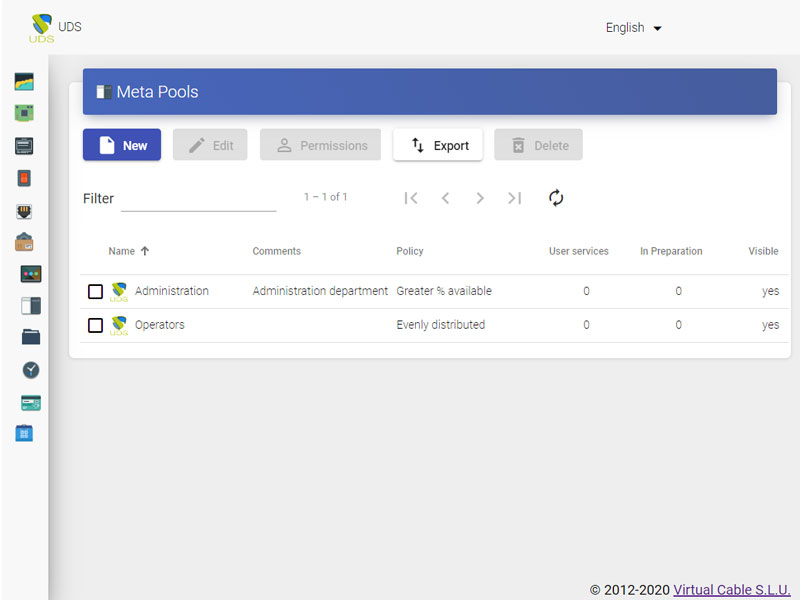This new development provides an extra level of flexibility, as it offers the possibility of creating hybrid Service Pools. The administrator is free to choose both the number and the nature of its components: he can combine on-premise and cloud platforms, VDI with static Pools, one licensed platform with another free and Open Source… You can even take advantage of this functionality to create clusters from several independent nodes. Something really useful in the case, for example, of not having shared storage and, therefore, not being able to mount a cluster in the usual way.
The combination of on-premise and cloud platforms gives infrastructures unlimited scalability. It avoids that the ability to meet peak demands is conditioned by the resources of the on-premise platform and helps to manage punctual workloads in a highly efficient way. The administrator can establish that once the on-premise resources are finished, the system begins to assign services hosted on a pay-per-use cloud platform. If you also leverage the possibility of programming the automatic shutdown of the machines when they are not in use, you add another advantage in terms of cost savings.
In the same way, you can combine a licensed platform with a free and Open Source one to expand your infrastructure without the costs skyrocketing. Or you can choose to reuse one or more obsolete equipment. To give an example, you could use one or several old servers installing KVM hypervisors to join them to the Meta Pool and thus increase the capacity of your platform.
The way in which the system will assign the services hosted in the different Service Pools that are part of a Meta Pool will depend on the policy chosen by the administrator of the platform. You can choose one of these three options:
-
Evenly distributed: When a user accesses, the system provides a service hosted in the first Service Pool, the next user will obtain a service from the second Service Pool, and so on.
-
Priority: You can stipulate what priority is given to each of the Service Pools, so that the system will first assign all the services within the Service Pool with the highest priority (Priority 0). Once all these services are assigned, the system will begin to assign those included in the next Service Pool (Priority 1), and so on.
-
Greater available: The moment a user enters, the system assigns a service from the Service Pool that has more free services available.
In addition to these usage policies, Meta Pools have many other configuration options. Soon we will publish another article on our blog in which we will delve into all the possibilities offered by this new functionality at the administration level, and we will show how to perform the configuration step by step.
For more information about this or other improvements included in the UDS Enterprise 3.0 VDI and vApp broker, see the articles published in our blog or contact our team at [email protected]








0 Comments